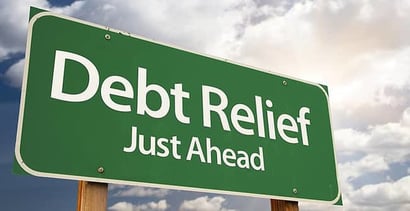

Debt stinks, but it’s not like most of us have much of a choice.
If you want to buy a house, you’re going to need to save a few hundred thousand dollars or take out a mortgage. If you want to buy a car, well, save up or take out a high-interest auto loan.
Accumulating a bit of debt to get what you need in life, like a college degree, home or car, isn’t all that bad. Leaving that debt stagnate and paying tens of thousands (or maybe even hundreds of thousands) of dollars in interest is.
Once you’ve accomplished what you had hoped, it’s time to start eliminating that debt until you reach the point where you can start paying yourself, which is exactly what you’ll need to do if you want to keep the debt off for the rest of your life.
1. Pull your credit report
The first step is to pull your credit report from all three bureaus.
You’re working to eliminate your debt, but you need to make sure there are no mistakes on your credit report before you get started.
If there are, get those mistakes corrected before moving on. It will help you avoid some major headaches.
2. Establish an emergency fund
Ideally, you’ll have two to three months worth of living expenses saved up. However, this can be very difficult for some, especially if they’re struggling to stay on top of their debt.
Make sure you save between $1,000 and $2,000 for unexpected emergencies, at the very least.
This is generally enough to replace any of your appliances, handle repairs for your vehicle, call a plumber, have your air condition worked on and many other things.
It will help to keep you from going back into debt to deal with something that was completely out of your control.
3. List your debts
Now that you’ve verified your credit report is accurate, it’s time to list all of your debts except the mortgage. We’ll come back to that one later. Obviously, if you don’t have a mortgage you won’t need to worry about it.
It’s best to list your debts in order, starting with the lowest total balance and moving up to the highest.
“You’ll know the feeling of pride that comes
from truly owning your possessions.”
4. Make a budget
It’s time to figure out exactly what your monthly expenses are, if you haven’t already done so.
Be sure to list everything you spend money on, including food, gas, clothing and entertainment. How much money is left over at the end of the month?
If there isn’t any left over, you’re going to have to figure out which of your discretionary spending categories can be trimmed.
For instance, if you’re used to spending $100 a month on entertainment, you might need to start staying home on Fridays and watching Netflix instead of going out to the bar.
You’re going to need this extra money for the next step.
5. Pay it off using the snowball metaphor
This entire plan is based on getting started. Once you do, it becomes far easier to maintain your momentum and burn through all of the debt that’s accumulated.
Take the debt with the smallest total balance and apply whatever extra money you can to it each month. Continue doing so until it’s paid off completely.
Now take everything you spent on paying that debt off each month and apply it to the next smallest debt. Once it’s paid off, you do the same and continue working through this process until you have no debts left except your mortgage.
6. Start paying yourself
Once you’ve paid off all of your small debts (like credit cards and car loans), it’s time to start paying yourself. You’ve been paying the bank for years, and you deserve to start enjoying the fruits of your own labor.
By taking the same amount of money you put toward your debts every month and putting it into your own account, you’ll be saving up for future expenses.
Imagine being able to buy your next car with cash. Imagine being able to take your friends and family members out to an expensive dinner without having to whip out the credit card.
That’s a nice feeling, isn’t it? But if you can’t make it happen, there are always auto loans for folks with bad credit.
7. Live life debt-free and breathe easier
Eventually you’ll fall into the habit of paying yourself first and avoiding debt all together. This is when it’s time to start focusing on paying down the mortgage and becoming completely debt-free.
Put a little extra toward your principal every month and you could end up paying your mortgage off in just a few years. Most importantly, you won’t suffocate under the pressure of accumulating debts.
You’ll feel a lot less stressed. And you’ll know the feeling of pride and accomplishment that comes from truly owning all of your possessions – and you’re life.
Photo source: lowcards.com.
Advertiser Disclosure
BadCredit.org is a free online resource that offers valuable content and comparison services to users. To keep this resource 100% free for users, we receive advertising compensation from the financial products listed on this page. Along with key review factors, this compensation may impact how and where products appear on the page (including, for example, the order in which they appear). BadCredit.org does not include listings for all financial products.
Our Editorial Review Policy
Our site is committed to publishing independent, accurate content guided by strict editorial guidelines. Before articles and reviews are published on our site, they undergo a thorough review process performed by a team of independent editors and subject-matter experts to ensure the content’s accuracy, timeliness, and impartiality. Our editorial team is separate and independent of our site’s advertisers, and the opinions they express on our site are their own. To read more about our team members and their editorial backgrounds, please visit our site’s About page.




